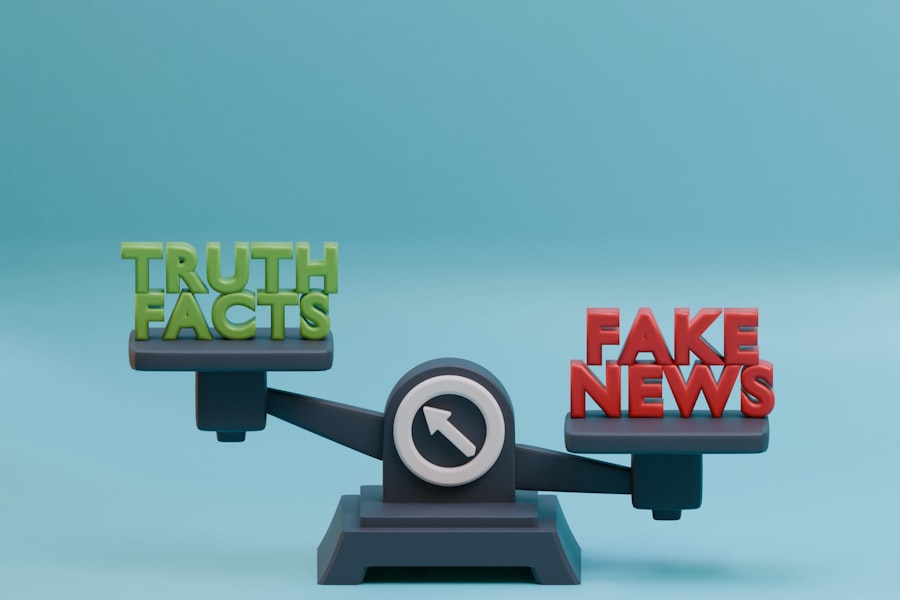The Central Intelligence Agency (CIA) has long been a subject of intrigue and speculation, particularly regarding its involvement in media manipulation. This clandestine agency, established in 1947, has operated under a veil of secrecy, often engaging in activities that blur the lines between national security and ethical conduct. Media manipulation, in this context, refers to the strategic use of information dissemination to influence public perception, shape narratives, and achieve specific political or military objectives.
The implications of such actions are profound, raising questions about the integrity of information and the role of media in a democratic society. As the digital age continues to evolve, the methods of media manipulation have also transformed, making it increasingly difficult for the public to discern fact from fiction. The CIA’s historical engagement in these practices serves as a cautionary tale about the power of information and the potential for abuse by those in positions of authority.
Understanding the intricacies of CIA media manipulation not only sheds light on past operations but also provides insight into contemporary issues surrounding misinformation and propaganda.
Key Takeaways
- CIA has a history of manipulating media for its own agenda
- Declassified documents reveal the tactics used by the CIA to influence public opinion
- Psychological operations and propaganda are key tools in CIA media manipulation
- Case studies highlight the impact of CIA media manipulation on public opinion
- Ethical and legal implications, as well as government oversight, are important considerations in addressing CIA media manipulation
Historical Context of CIA Involvement in Media Manipulation
The roots of CIA involvement in media manipulation can be traced back to the early years of the Cold War. As tensions escalated between the United States and the Soviet Union, the CIA recognized the importance of controlling narratives to maintain national security. The agency sought to counteract Soviet propaganda and influence public opinion both domestically and internationally.
This led to the establishment of covert operations aimed at infiltrating media outlets, funding sympathetic journalists, and disseminating disinformation. One of the most notable early examples of CIA media manipulation occurred during the 1950s with Operation Mockingbird. This initiative aimed to influence domestic and foreign media by recruiting journalists and editors to promote pro-American narratives.
The agency’s efforts extended beyond traditional print media; it also sought to control radio broadcasts and television programming. By embedding its operatives within influential media organizations, the CIA was able to shape public discourse and ensure that its perspective dominated the narrative surrounding critical geopolitical events.
Declassified Tactics Used by the CIA
Over the decades, various tactics employed by the CIA for media manipulation have been declassified, revealing a complex web of strategies designed to influence public perception. One prominent tactic involved the use of front organizations—entities that appeared independent but were actually funded and controlled by the CIThese fronts allowed the agency to disseminate information without revealing its involvement, creating an illusion of credibility. Another method involved psychological operations (PSYOP), which aimed to influence attitudes and behaviors through targeted messaging.
The CIA utilized various forms of media, including pamphlets, films, and radio broadcasts, to reach specific audiences. By crafting narratives that resonated with cultural values or fears, the agency sought to sway public opinion in favor of U.S. interests.
Additionally, disinformation campaigns were employed to spread false information about adversaries, further complicating the landscape of truth in media.
Psychological Operations and Propaganda
| Metrics | Psychological Operations and Propaganda |
|---|---|
| Reach | Number of people exposed to the message |
| Engagement | Level of interaction with the propaganda content |
| Effectiveness | Impact of the psychological operations on the target audience |
| Response Rate | Percentage of people who took action after being exposed to the propaganda |
Psychological operations represent a critical component of the CIA’s media manipulation strategy. These operations are designed to create psychological effects on target audiences, often through carefully crafted messages that exploit existing beliefs or fears. The agency recognized that shaping perceptions could be as powerful as military action in achieving strategic objectives.
Propaganda plays a central role in these psychological operations. The CIA has historically utilized various forms of propaganda to promote its agenda, including films that glorified American values or vilified adversaries. By controlling the narrative surrounding key events, the agency aimed to foster support for U.S.
policies both at home and abroad. The effectiveness of these operations often hinged on their ability to resonate with cultural sentiments, making them more persuasive and impactful.
Case Studies of CIA Media Manipulation
Several case studies illustrate the extent of CIA media manipulation throughout history. One notable example is the agency’s involvement in the 1954 coup in Guatemala. The CIA orchestrated a campaign to discredit President Jacobo Árbenz by portraying him as a communist sympathizer through manipulated media narratives.
By planting stories in newspapers and utilizing radio broadcasts, the agency successfully swayed public opinion against Árbenz, ultimately leading to his ousting. Another significant case is Operation CHAOS, which aimed to monitor and disrupt anti-war movements during the Vietnam War era. The CIA infiltrated various activist groups and used disinformation tactics to undermine their credibility.
By manipulating media coverage and spreading false narratives about protestors, the agency sought to diminish public support for anti-war sentiments. These case studies highlight not only the effectiveness of CIA media manipulation but also its far-reaching consequences on political landscapes.
Impact of CIA Media Manipulation on Public Opinion

The impact of CIA media manipulation on public opinion is profound and multifaceted. By controlling narratives and disseminating targeted information, the agency has been able to shape perceptions on critical issues ranging from foreign policy to domestic social movements. This manipulation often leads to a distorted understanding of events, as individuals may base their beliefs on information that is intentionally skewed or misleading.
Moreover, the long-term effects of such manipulation can erode trust in traditional media sources. When individuals become aware of covert operations aimed at influencing public opinion, skepticism towards news outlets can increase. This erosion of trust can have significant implications for democracy, as an informed citizenry is essential for holding power accountable.
The legacy of CIA media manipulation serves as a reminder of the importance of transparency and integrity in journalism.
Ethical and Legal Implications of CIA Media Manipulation
The ethical and legal implications surrounding CIA media manipulation are complex and contentious. On one hand, proponents argue that such actions are justified in the name of national security, particularly during times of geopolitical tension. However, critics contend that manipulating public perception undermines democratic principles and violates ethical standards in journalism.
Legally, the CIA operates within a framework that often prioritizes national security over transparency. This has led to debates about accountability and oversight regarding covert operations involving media manipulation. The lack of clear legal boundaries raises questions about the extent to which government agencies should be allowed to engage in such practices without public knowledge or consent.
Whistleblowers and Revelations about CIA Media Manipulation
Whistleblowers have played a crucial role in exposing CIA media manipulation tactics over the years.
These disclosures have shed light on previously hidden practices and sparked public debate about the ethical implications of such actions.
One notable whistleblower is Philip Agee, a former CIA officer who publicly criticized the agency’s involvement in covert operations during the 1970s. Agee’s revelations about Operation Mockingbird and other initiatives prompted widespread scrutiny of the CIA’s practices and raised awareness about the potential dangers of unchecked government power in manipulating information.
Media Response to Declassified CIA Tactics
The media’s response to declassified CIA tactics has evolved over time as more information has come to light regarding the agency’s involvement in manipulating narratives. Initially, many journalists were unaware of the extent to which their work was influenced by covert operations. However, as whistleblowers and declassified documents revealed these practices, journalists began to grapple with their role in perpetuating manipulated narratives.
In recent years, there has been a growing emphasis on journalistic integrity and accountability within news organizations. Many journalists now prioritize transparency and strive to verify information before disseminating it to the public. The legacy of CIA media manipulation serves as a cautionary tale for contemporary journalists, highlighting the importance of maintaining independence from external influences while upholding ethical standards.
Government Oversight and Regulation of CIA Media Manipulation
Government oversight and regulation concerning CIA media manipulation remain contentious issues within democratic societies. While some argue for increased transparency and accountability regarding intelligence operations, others contend that national security concerns necessitate a degree of secrecy in certain activities. Efforts have been made to establish oversight mechanisms that ensure intelligence agencies operate within legal boundaries while respecting civil liberties.
However, challenges persist in balancing national security interests with public accountability. As technology continues to evolve, so too do the methods employed by intelligence agencies, necessitating ongoing discussions about appropriate oversight measures.
Conclusion and Future Implications of Declassified CIA Media Manipulation
The declassification of CIA media manipulation tactics has profound implications for contemporary society. As individuals navigate an increasingly complex information landscape marked by misinformation and propaganda, understanding historical precedents becomes essential for fostering informed citizenship. The legacy of CIA involvement in media manipulation serves as a reminder of the power dynamics inherent in information dissemination.
Looking ahead, it is crucial for both journalists and citizens to remain vigilant against attempts at manipulation by any entity—governmental or otherwise. Promoting transparency, accountability, and ethical standards within journalism will be vital in safeguarding democratic principles against potential abuses of power in an era where information is both a weapon and a tool for empowerment. As society grapples with these challenges, lessons learned from past experiences will undoubtedly shape future discourse surrounding media integrity and national security.
In recent years, the topic of media manipulation has garnered significant attention, particularly with revelations about the CIA’s involvement in shaping public perception. A related article that delves into the intricacies of such covert operations can be found on the website “In The War Room.” This article provides an in-depth analysis of the strategies employed by intelligence agencies to influence media narratives and public opinion. For those interested in exploring this subject further, you can read more about it by visiting In The War Room. This resource offers valuable insights into the historical and contemporary practices of media manipulation by intelligence organizations.
CHECK THIS OUT! 📽️🎞️ Hollywood’s Secret War: How the CIA Rewrote Movies
FAQs
What is the declassified CIA media manipulation?
The declassified CIA media manipulation refers to the revelation of the Central Intelligence Agency’s efforts to influence and manipulate media outlets and public opinion through covert operations and propaganda campaigns.
When did the declassified CIA media manipulation take place?
The declassified CIA media manipulation took place during the Cold War era, particularly in the 1950s, 1960s, and 1970s. However, there have been reports of similar activities continuing into more recent times.
What were the methods used in the declassified CIA media manipulation?
The CIA used various methods to manipulate the media, including planting false stories, spreading propaganda, influencing journalists and media organizations, and conducting covert operations to shape public opinion in support of its political and strategic objectives.
What were the reasons behind the declassified CIA media manipulation?
The CIA’s media manipulation efforts were driven by the agency’s desire to control the narrative and influence public opinion in support of its foreign policy goals, counterintelligence activities, and efforts to combat the spread of communism during the Cold War.
What were the implications of the declassified CIA media manipulation?
The declassified CIA media manipulation raised concerns about the integrity and independence of the media, as well as the potential impact on democratic processes and public trust. It also sparked debates about the ethical boundaries of government involvement in shaping public discourse.




